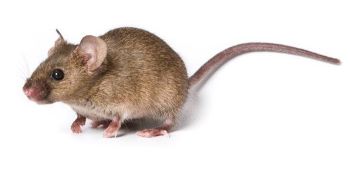Swift Efforts Are Underway To Distribute a Mouse Model for COVID-19 Research
The current COVID-19 pandemic in humans, caused by the novel coronavirus strain SARS-CoV-2, has compelled scientists around the world to work remarkably fast to develop vaccines and therapeutics. To achieve this, many researchers are looking to use animal models for their studies. But do animal models for COVID-19 research exist?
Animal Models for Coronavirus Research
The Office of Research Infrastructure Programs (ORIP) at the National Institutes of Health (NIH) aims to provide scientists with the resources and infrastructure they need to improve human health. Among ORIP’s goals is helping to ensure the capability of the United States to prevent disease. Toward this end, ORIP awards grants to support research-related projects and resources, including state-of-the-art biomedical instrumentation and the development of animal models of human disease.
Animal models of all kinds—including fruit flies, nematodes, fish, frogs, mice, pigs, and nonhuman primates (NHPs)—have long been used to study diseases that affect humans. They allow researchers to better understand the course of human disease without the risks associated with studying humans. In an animal model of a particular disease, however, the route of infection, severity of disease, and morbidity and mortality levels should all be similar to the human course of the disease.1 Because a virus can affect humans and animals differently, animals must sometimes be genetically engineered to achieve these similarities. The challenge that researchers face is to develop animal models that not only mimic the human course of disease but also can be reproduced quickly and easily. Coronaviruses are a group of viruses that include the severe acute respiratory syndrome (SARS) and Middle East respiratory syndrome (MERS) coronaviruses that led to significant outbreaks during the early 2000s and mid-2010s, respectively. Animal models that have been used for research on coronaviruses include mice, rats, hamsters, ferrets, and such NHPs as rhesus macaques and common marmosets.2 Many of the studies on coronaviruses have been conducted using mice, in large part because they are easy to handle and reproduce relatively rapidly.

During the SARS epidemic in the early 2000s, researchers began working to develop a mouse model specific to SARS. Mice infected with SARS, however, generally show little evidence of disease—not enough to mimic the severe course of disease seen in humans. This is because the SARS virus infects a host animal by attaching itself to a receptor on the host’s cells called the angiotensin-converting enzyme 2 (ACE2) receptor, and the mouse version of the receptor is different enough from the human version that the effects of the SARS virus are not the same.
This led researchers, including Dr. Stanley Perlman at the University of Iowa, to genetically engineer mice so that they express the human version of the ACE2 receptor (human ACE2, or hACE2). The course of disease in these engineered mice more closely resembled the course of disease seen in humans.3 Research on the SARS virus took place in earnest at the time using such mouse models; however, interest waned as the outbreak dissipated, and no vaccine or antiviral drugs were successfully developed.
Maintaining live colonies of such specialized strains of mice can be costly and impractical. In lieu of continuing to keep live colonies in his laboratory, in 2014, Dr. Perlman had his hACE2 strain cryopreserved by The Jackson Laboratory in Bar Harbor, Maine—an independent, nonprofit biomedical research institution that is dedicated to mammalian genetics research and provides mouse models to the scientific community—and sent back to his laboratory in case the mice would be needed again.
Swift Action in Response to COVID-19
The COVID-19 pandemic, caused by a different strain of SARS virus, inspired Dr. Perlman, in February 2020, to donate his laboratory’s frozen hACE2 mouse material to The Jackson Laboratory. The Jackson Laboratory immediately reanimated Dr. Perlman’s hACE2 mouse strain and began breeding it as quickly as possible for distribution to the scientific community. Dr. Cathleen Lutz, an ORIP grantee and Senior Director of The Jackson Laboratory’s mouse repository, led this effort and underscored ORIP’s role in making this work possible.
“For years, ORIP funded not only the mouse repository but also some of the research to enhance and improve the repository. One of these research areas was sperm cryopreservation and in vitro fertilization,” Dr. Lutz said. The Jackson Laboratory team leveraged the knowledge and techniques they developed over the years to rapidly expand the current hACE2 mouse model. “We went from a couple of vials of sperm to more than 1,000 mice in just one breeding generation,” she explained. Before these techniques were developed, such work was performed using embryos, a more costly and less efficient method.

Since the start of the COVID-19 outbreak, The Jackson Laboratory has received orders for the hACE2 mice from hundreds of laboratories. One challenge is the length of the mouse breeding generation—from conception to sexual maturity is 10–12 weeks. Nevertheless, Dr. Lutz’s team has been able to complete multiple in vitro fertilizations using the frozen mouse sperm. The first orders of hACE2 mice for use in COVID-19 research were distributed in late April, and the next wave of animals is expected to be distributed by mid-June. “We think it is going to be an incredibly useful model,” Dr. Lutz added. “Having an efficient, high-throughput, small-animal model is going to be critical to the success of this research.”
The most immediate work using these animals will be to screen antiviral drugs and vaccines. Scientists do not yet know how the model will react upon infectivity, but it will be important for the model to have a fast disease progression so that molecules can be screened very quickly. In the longer term, Dr. Lutz foresees the development of mouse models that physiologically match the human populations affected by COVID-19. This includes developing models with a humanized immune system, as well as combining preclinical models to reflect different patient populations—for example, models that have comorbidities with type 1 diabetes, hypertension, or obesity.
The Mutant Mouse Resources & Research Centers
In addition to her role at The Jackson Laboratory, Dr. Lutz is the head of the Mutant Mouse Resources & Research Centers (MMRRC), an ORIP-sponsored consortium that distributes and cryopreserves genetically engineered mouse strains and mouse embryonic stem cell lines. The Jackson Laboratory is one of the MMRRC’s four distribution facilities, each with its own areas of expertise, such as veterinary medicine or animal production. Together with the MMRRC’s Informatics, Coordination and Service Center, these facilities function as a single repository that distributes animals to the scientific community at cost.
“The funding from ORIP plays such a critical role in our ability to do this work. The sperm cryopreservation and in vitro fertilization technologies disrupted our business in a very positive way and have allowed us to go from 45 new models a year to 450 new models that we can distribute to the scientific community,” noted Dr. Lutz.
Dr. Lutz explained that if Dr. Perlman’s hACE2 mice had not been cryopreserved, remaking and validating such a mouse model likely would take more than a year. Continued investment in repositories and related infrastructure is critical. Dr. Lutz stated that “ORIP has recognized this for many years, and for that the scientific community is incredibly grateful.” She drew a parallel to the electrical grid: “Until your power goes out, it is not something you often think about.”
“This is not going to be the last mouse model for COVID-19,” she added. Dr. Terry Magnuson, a principal investigator for the MMRRC at The University of North Carolina at Chapel Hill, is working to establish a colony of another coronavirus mouse model at his facility for distribution to the scientific community. Information about this strain is available at https://www.mmrrc.org/catalog/sds.php?mmrrc_id=66719. Several new and unique humanized knockin/mouse knockout models also are under development at the MMRRC at the University of California, Davis. These models will be validated and made available without restriction to the biomedical research community for studying the pathogenesis of SARS-CoV-2 and other viruses, as well as for screening vaccines and therapeutics.
References
1 Gretebeck LM, Subbarao K. Animal models for SARS and MERS coronaviruses. Current Opinion in Virology 2015;13:123–9. doi: 10.1016/j.coviro.2015.06.009.
2 Cohen J. Mice, hamsters, ferrets, monkeys. Which lab animals can help defeat the new coronavirus? Science. 2020. doi: 10.1126/science.abc2335.
3 McCray Jr. PB, Pewe L, Wohlford-Lenane C, Hickey M, Manzel L, Shi L, Netland J, Peng Jia H, Halabi C, Sigmund CD, Meyeholz DK, Kirby P, Look DC, Perlman S. Lethal infection of K18-hACE2 mice infected with severe acute respiratory syndrome coronavirus. Journal of Virology 2007;81(2):813–21. doi: 10.1128/jvi.02012-06.



